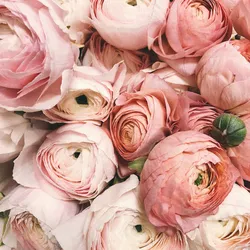
Level 1:
Flower petals are pretty. We can change them into art. It looks amazing! Delicate and colorful! We can use them to make pictures. We need to keep them safe. They can last a long time. Making art with petals is tricky. We can put small pieces together like a puzzle. We can also stick them on paper. It makes beautiful designs. Some colors are different and stand out. Other colors look nice together. Art can make us feel things. It is a way to say thank you to nature. Flowers don’t last forever. They disappear quickly. But we can keep their beauty in our art. We can use our imagination and create new things. Art is fun and special.
Level 2:
Flower petals are beautiful. We can turn them into art, and it looks incredible! They are delicate and full of color. We can use them to create pictures. We need to protect them to make them last longer. Making art with petals can be a bit tricky. We can arrange small pieces together like a puzzle. We can also stick them onto paper to make lovely designs. Some colors are different and stand out, while others blend nicely together. Art can evoke feelings and show our appreciation for nature. Flowers don’t last forever, but through our art, we can capture and preserve their beauty. Using our imagination, we can create something new. Art is enjoyable and special.
Full Story:
In a world filled with remarkable natural wonders, one particular aspect never ceases to captivate our senses—the delicate beauty of flowers. However, what if we told you that there is an extraordinary way to elevate the allure of flowers even further? Brace yourself as we delve into the fascinating realm of transforming petals into mesmerizing art. In this article, we’ll explore the intriguing process of harnessing the innate grace of petals and channeling it into captivating artistic creations. Get ready to embark on a journey that unveils the secrets behind this remarkable art form.
The Beauty of Petals:
Before we delve into the transformative process, let’s take a moment to appreciate the inherent beauty of petals. These vibrant and colorful components of a flower serve as nature’s canvas, where intricate patterns and hues come to life. Each petal possesses a unique texture, shape, and fragrance, making it a perfect medium for artistic exploration.
Embracing Creativity:
transforming petals invites us to explore our creative side and experiment with new possibilities. It encourages us to step away from traditional art forms and immerse ourselves in the organic essence of nature. By harnessing the versatility of petals, artists can create masterpieces that evoke emotions and stimulate our senses in ways we never thought possible.
The Process Unveiled:
How does one go about transforming petals into mesmerizing art? The process begins with carefully selecting fresh and vibrant flowers. These flowers are chosen not only for their beauty but also for their ability to retain their colors and shapes even after they dry. Once the flowers have been gathered, the petals are carefully plucked and prepared for the next stage of the transformation.
Preservation Techniques:
Preserving the beauty of petals is crucial to ensure their longevity as artistic materials. Various preservation techniques, such as air-drying, pressing, or using desiccants, are employed to maintain the natural colors and shapes of the petals. These methods not only prevent decay but also help to retain the delicate textures that make petals so visually appealing.
Crafting Intricate Designs:
With preserved petals at their disposal, artists can begin the intricate process of crafting their designs. From creating stunning mosaics and intricate collages to fashioning three-dimensional sculptures, the possibilities are endless. The use of adhesive mediums, such as glue or resin, allows petals to be arranged and fixed in place, giving birth to awe-inspiring works of art.
Exploring Color Play:
Petals offer a vast range of colors, enabling artists to explore an endless array of color combinations and compositions. The interplay of vibrant reds, soothing blues, and cheerful yellows can create visually striking contrasts or harmonious blends. The colors of petals have the power to evoke emotions and convey messages without the need for words.
A Tribute to Nature:
Transforming petals into art is not only a creative endeavor but also a way to pay homage to the beauty of nature. By utilizing elements that are found abundantly in our natural surroundings, artists can create pieces that serve as reminders of the intricate wonders that exist all around us. This art form celebrates the ephemeral nature of flowers, capturing their essence in timeless creations.
Conclusion: As we conclude our journey into the enchanting world of transforming petals into mesmerizing art, we can’t help but be in awe of the immense creativity and beauty that this process entails. The ability to harness the innate grace of petals and translate it into captivating artwork is a testament to the limitless possibilities of human imagination.
Questions:
How can flower petals be transformed into art?
Answer: Flower petals can be transformed into art by carefully selecting fresh and vibrant flowers, preserving the petals through techniques like air-drying or pressing, and using them to create mosaics, collages, or sculptures.
Why is it important to preserve the beauty of petals?
Answer: It is important to preserve the beauty of petals to maintain their natural colors, shapes, and delicate textures, ensuring their longevity as artistic materials.
What are some ways artists can use petals to create art?
Answer: Artists can use petals to create art by arranging them in intricate designs, using adhesive mediums to fix them in place, and exploring the play of colors and contrasts in their compositions.
Do flower petals evoke emotions in art without the need for words?
Answer (): Yes, flower petals in art have the ability to evoke emotions through their vibrant colors, delicate forms, and the connection we have with nature. They can communicate feelings and messages without relying on words.
How does transforming petals into art pay tribute to nature?
Answer: Transforming petals into art pays tribute to nature by celebrating the beauty of flowers and capturing their ephemeral essence in timeless creations. It reminds us of the intricate wonders that exist in our natural surroundings.
Fill in the Blanks:
ephemeral, collages, intricate, transforming, vibrant, Mesmerizing, evoke, mosaics, preserve, essence, Petals, homage, sculptures, Transforming, art, mesmerizing, imagination, harmonious, mediums, Intricate, hues, Art, petals, longevity, delicate, adhesive, Delicate, canvas
Title: Unleashing the Beauty: ________ ________ into ________ ________
Introduction:
In a world filled with remarkable natural wonders, one particular aspect never ceases to captivate our senses—the ________ beauty of flowers.
Brace yourself as we delve into the fascinating realm of ________ ________ into ________ ________.
These ________ and colorful components of a flower serve as nature’s ________, where ________ patterns and ________ come to life.
It encourages us to step away from traditional art forms and immerse ourselves in the organic ________ of nature.
By harnessing the versatility of petals, artists can create masterpieces that ________ emotions and stimulate our senses in ways we never thought possible.
Preservation Techniques:
Preserving the beauty of petals is crucial to ensure their ________ as artistic materials.
Crafting ________ Designs:
With preserved petals at their disposal, artists can begin the intricate process of crafting their designs.
From creating stunning ________ and intricate ________ to fashioning three-dimensional ________, the possibilities are endless.
The use of ________ ________, such as glue or resin, allows petals to be arranged and fixed in place, giving birth to awe-inspiring works of art.
The interplay of vibrant reds, soothing blues, and cheerful yellows can create visually striking contrasts or ________ blends.
A Tribute to Nature:
Transforming petals into art is not only a creative endeavor but also a way to pay ________ to the beauty of nature.
This art form celebrates the ________ nature of flowers, capturing their essence in timeless creations.
The ability to harness the innate grace of petals and translate it into captivating artwork is a testament to the limitless possibilities of human ________.
________ and colorful!
Flowers don’t last forever, but through our art, we can capture and ________ their beauty.
Vocabulary:
Petals - (noun) The colorful, delicate, and often fragrant parts of a flower that surround the reproductive organs.
Transforming - (verb) Changing or converting something in form, appearance, or nature.
Mesmerizing - (adjective) Captivating or spellbinding in a way that holds one’s attention and fascination.
Art - (noun) The expression or application of human creative skill and imagination, typically in visual form, to produce works appreciated for their beauty or emotional power.
Delicate - (adjective) Fragile or easily damaged; requiring careful handling.
Vibrant - (adjective) Full of energy, enthusiasm, or vivid color.
Hues - (noun) Colors or shades, especially when used to describe a particular tone or shade of color.
Canvas - (noun) A strong, coarse cloth used for making sails, tents, or paintings.
Essence - (noun) The intrinsic nature or indispensable quality of something, especially something abstract, that determines its character.
Preserve - (verb) To maintain or keep something in its original or existing state.
Longevity - (noun) The duration or length of time that something continues to exist or function.
Intricate - (adjective) Complicated or detailed in design or structure.
Mosaics - (noun) Artistic compositions made by assembling small pieces of colored glass, stone, or other materials.
Collages - (noun) Artwork created by pasting or assembling various materials, such as paper, photographs, or fabric, onto a surface.
Sculptures - (noun) Three-dimensional art forms created by carving, modeling, or molding materials such as clay, stone, or metal.
Adhesive - (noun) A substance used for sticking objects or materials together.
Mediums - (noun) Materials or substances used by artists to create their work, such as paint, clay, or ink.
Contrast - (noun) The state of being noticeably different from something else; a striking difference.
Harmonious - (adjective) Forming a pleasing or consistent whole; free from discord or conflict.
Evoke - (verb) To bring a feeling, memory, or image into the mind; to elicit or draw out a response.
Homage - (noun) A tribute or expression of respect and admiration.
Ephemeral - (adjective) Lasting for a short period; transient or fleeting.
Imagination - (noun) The faculty or action of forming new ideas, concepts, or images in the mind.
Creativity - (noun) The use of imagination or original ideas to create something unique and valuable.




